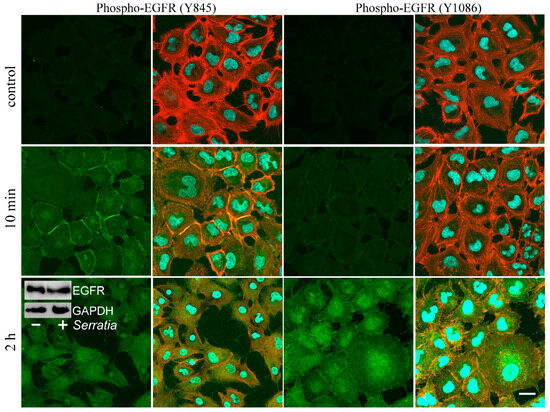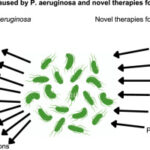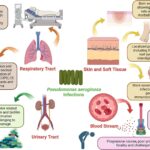Serratia marcescens is a Gram-negative, facultative anaerobic bacillus belonging to the Enterobacteriaceae family. Although more commonly implicated in nosocomial bloodstream infections and urinary tract infections, S. marcescens can also cause rare but devastating cases of central nervous system (CNS) infections, including meningitis, particularly in immunocompromised patients or neonates.
These infections are clinically challenging due to the organism’s intrinsic resistance mechanisms, notably the production of AmpC beta-lactamases, efflux pumps, and biofilm formation.

Clinical Challenges in Treating Serratia Meningitis
The treatment of Serratia meningitis is hindered by:
- Poor blood-brain barrier penetration of many antimicrobials.
- Intrinsic resistance to several beta-lactam antibiotics.
- Limited clinical data guiding therapy.
- Potential for nosocomial transmission, especially in intensive care units.
Given these issues, evaluating synergy between antimicrobial agents is vital to designing effective therapeutic regimens.
Evaluating Synergy in Serratia marcescens Meningitis
Antibiotic synergy refers to the enhanced bactericidal effect observed when two or more antibiotics are used in combination, resulting in a stronger outcome than the sum of their individual effects.
Methods to Assess Antimicrobial Synergy
Several in vitro techniques are employed to evaluate synergy:
- Checkerboard dilution method
- Time-kill assays
- E-test strip crossing
- Fractional inhibitory concentration index (FICI)
A FICI value of ≤0.5 typically indicates synergy, 0.5–1.0 additivity, 1.0–4.0 indifference, and >4.0 antagonism.
Synergistic Combinations for Serratia Meningitis
1. Carbapenems Plus Aminoglycosides
Carbapenems (e.g., meropenem, imipenem) have the best CNS penetration and activity against AmpC-producing organisms. When combined with aminoglycosides (e.g., amikacin, gentamicin), they demonstrate improved bactericidal action against S. marcescens, particularly in strains with borderline susceptibility.
- Clinical Consideration: Use with caution due to nephrotoxicity risks, especially in prolonged therapies.
2. Fluoroquinolones Plus Third-Generation Cephalosporins
While resistance to fluoroquinolones is rising, levofloxacin or ciprofloxacin, in combination with ceftazidime or ceftriaxone, has demonstrated synergy in vitro. This is particularly effective against less resistant strains.
- Advantage: Fluoroquinolones achieve therapeutic levels in cerebrospinal fluid (CSF).
3. Polymyxins with Rifampin
Though rarely used in CNS infections due to toxicity and penetration concerns, colistin combined with rifampin has shown synergy against multidrug-resistant (MDR) S. marcescens in vitro.
- Limitation: Rifampin should not be used as monotherapy due to rapid resistance development.
Empirical vs Targeted Therapy in Serratia CNS Infections
| Phase of Treatment | Recommended Approach |
|---|---|
| Empirical Phase | Broad-spectrum coverage with meropenem or cefepime plus amikacin |
| Definitive Therapy | Adjusted based on susceptibility testing and synergy outcomes |
| Duration | 14–21 days for meningitis; longer if abscesses or ventriculitis present |
Mechanisms of Resistance in Serratia marcescens
Understanding the resistance mechanisms is critical for optimizing synergistic therapy:
- AmpC β-lactamases: Confer resistance to penicillins and first/second-generation cephalosporins.
- Efflux pumps: Lower intracellular antibiotic concentrations.
- Biofilm production: Protects bacterial communities from antibiotics and immune responses.
- Porin mutations: Reduce permeability to carbapenems and other agents.
Case-Based Evidence of Synergistic Treatment Success
Several case reports have supported the effectiveness of synergistic antibiotic therapy:
- Neonatal meningitis: Successful clearance with meropenem + amikacin.
- Post-neurosurgical infection: Combination of cefepime + levofloxacin led to full recovery.
- MDR Serratia: Colistin and rifampin resulted in microbiological eradication when no other options were viable.
Antimicrobial Stewardship and Future Directions
- Routine synergy testing should be encouraged in suspected Serratia CNS infections.
- Genomic sequencing can help detect resistance genes and predict synergy outcomes.
- Combination therapies must be used judiciously to limit resistance development.
Continued research into newer agents such as cefiderocol and β-lactam/β-lactamase inhibitor combinations may offer new hope in managing difficult-to-treat Serratia meningitis.
Effective management of Serratia marcescens meningitis necessitates a strategic approach grounded in synergy-based antibiotic combinations. Given the organism’s resistance profile and the complexities of CNS infections, tailored regimens derived from susceptibility and synergy testing significantly enhance the likelihood of therapeutic success. Integration of rapid diagnostics and stewardship protocols will remain pivotal in improving patient outcomes.

